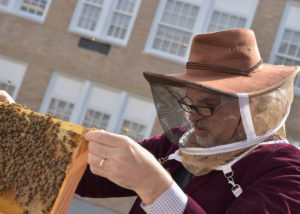Tim Martin ’22
DANBURY, Connecticut —Tim Martin’s contribution to the Bee Hive community with another publication (
article)
There are many maladies that can affect the health of a beehive. Their effects range from nuisance to serious problem affecting hive survival (Arbia & Babbay, 2010).Fungal and bacterial diseases include American foulbrood (AFB), European foul brood (EFB) and chalk brood (Bailey, 1983; Ashiralieva & Genersch, 2006; Heath, 1982). These diseases do not affect the adult honey bees, but profoundly affect the developing brood (Oldroyd, 2007). Protozoan pests include two Nosema species, Nosema apis and Nosema cerena, which infest the gut of adult bees and can cause dysentery and death (Zander, 1909; Fries, 2010). Additionally, most honey bees carry viruses that under normal conditions do not cause harm to the honey bee (Ribière et al., 2000; Nielsen et al., 2008). Gajda et al. (2021) found at least 36 different bee viruses inside of tested hives. They posit that only seven of these are likely to cause harm to the bees. Those viruses likely to cause harm are deformed wing virus (DWV), acute bee paralysis virus (ABPV), black queen cell virus (BQCV), bee virus Y (BVY), Apis mellifera filamentous virus (AmFV), chronic bee paralysis virus (CBPV) and sacbrood virus (SBV). Two of the most common insect pests of beehives include the Varroa destructor mite and the lesser wax moth Achroia grisella (Oldroyd, 1999; Burges & Bailey, 1968). This case report will detail and unusual instance of A. grisella in a healthy beehive.
